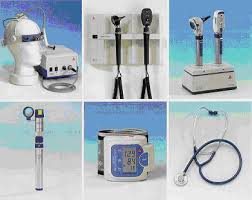
Nature of work
A medical equipment repairer installs, maintains, and repairs patient care equipment. He/she tests and calibrates parts and equipment, repairs and replaces parts, and performs preventive maintenance and service. Also, he/she keeps records of maintenance and repairs, reviews technical manuals and regularly attends training sessions, demonstrates correct operation of medical equipment, inspects and tests malfunctioning medical and related equipment following manufacturers' specifications. Moreover, He/she uses test and analysis instruments, examines medical equipment and facility's structural environment, checks for proper use of equipment to protect patients and staff from electrical or mechanical hazards and to ensure compliance with safety regulations. Furthermore, he/she disassembles malfunctioning equipment, removes, and repairs and replaces defective parts such as motors, clutches or transformers. In addition to that, he/she repairs a wide variety of electronic, electromechanical, and hydraulic equipment used in hospitals. He/she may work on patient monitors, defibrillators, medical imaging equipment (X rays, CAT scanners, and ultrasound equipment). Environment of work
A medical equipment repairer deals with wholesale suppliers, hospitals, electronic repair and maintenance shops, health and personal care stores. Because repairing vital medical equipment is urgent, the work can sometimes be stressful. A medical equipment repairer who works by a contract often has to travel, sometimes long distances to do the necessary repairs. A medical equipment repairer often must work in an environment surrounded by patients, which has the potential to expose him/her to diseases and other health risks. Although a medical equipment repairer usually works during the day, he/she is sometimes expected to be on call, including nights and weekends. Most his/her work is full time, but some repairers have variable schedules.
Professional life
A medical equipment repairer deals with wholesale suppliers, hospitals, electronic repair and maintenance shops, health and personal care stores. Because repairing vital medical equipment is urgent, the work can sometimes be stressful. A medical equipment repairer who works by a contract often has to travel, sometimes long distances to do the necessary repairs. A medical equipment repairer often must work in an environment surrounded by patients, which has the potential to expose him/her to diseases and other health risks. Although a medical equipment repairer usually works during the day, he/she is sometimes expected to be on call, including nights and weekends. Most his/her work is full time, but some repairers have variable schedules. Getting the job
Employers generally prefer a candidate who has an associate’s degree in biomedical technology or engineering. Depending on the area of specialization especially the advanced ones, repairers may need a bachelor’s degree. Education requirements for a medical equipment repairer vary depending on a worker’s experience and area of specialization. However, the most common education is an associate’s degree in biomedical equipment technology or engineering. Those who repair less-complicated equipment, such as hospital beds and electric wheelchairs, may learn entirely through on-the-job training. Others, particularly those who work on more sophisticated equipment, such as CAT scanners and defibrillators, may need a bachelor's degree. A new worker generally starts by watching and helping experienced repairers for 3 to 6 months and learning about one piece of equipment at a time. Gradually, a new worker begins working more independently while still under supervision. Each piece of equipment is different, so he/she must learn each one separately. In some cases, this requires studying a machine’s technical specifications and manual. Medical device manufacturers also may provide technical training. Skills
There are many skills that medical equipment repairers need to have and to improve; such as:Dexterity. Many tasks, such as taking apart mechanical parts, connecting or attaching parts, and using hand tools, require a steady hand and good hand-eye coordination.
Mechanical skills. He/she must be familiar with medical components and systems and how they interact. Often, a repairer must take apart major parts of fixing and be able to put them back together when the work is completed.
Stamina. Standing, crouching, and bending in awkward positions are common when making repairs to equipment. Therefore, a worker must be able to be physically active for long periods without tiring.
Technical skills. He/she must be familiar with both the equipments’ internal parts and the appropriate tools needed to fix them.
Time-management skills. Because repairing vital medical equipment is urgent, a worker must make good use of their time and do repairs quickly.
Troubleshooting skills. As medical equipment becomes more intricate, problems become more difficult to identify. Therefore, a repairer must be able to find and solve problems that are not immediately apparent.
Sources and references
If you need any further information on what is included in this file, you can visit the following websites:· bmes.org, Biomedical Engineering Society
· www.biomedical-engineering-online.com, the journal covers many aspects of biomedical engineering.
· The Order of Syrian engineers, Damascus, Tel: 6627256
· www.arab-eng.org, Arab Engineers Forum.
· Arab Standard Classification of Occupations, 2008, Ed. Arab Labor Organization.
